Retro Replay Review
Gameplay
Dunkey Munkey offers a tightly focused take on the classic Donkey Kong formula, split into two distinct screens that each bring their own brand of challenge. The first level recreates the “pop rivets” scenario, tasking players with running across a crisscrossing scaffold and removing all the rivets to bring the structure crashing down. As you dodge wandering flames, timing and precision become essential—one misplaced step can send you scrambling back to the last safe platform.
(HEY YOU!! We hope you enjoy! We try not to run ads. So basically, this is a very expensive hobby running this site. Please consider joining us for updates, forums, and more. Network w/ us to make some cash or friends while retro gaming, and you can win some free retro games for posting. Okay, carry on 👍)
To mix up the pacing, the game provides a temporary fire extinguisher power-up that lets you clear flames from your path. It’s a smart addition that adds a risk/reward dilemma: use the extinguisher and lose the ability to jump or climb ladders for a short time, or tackle the heat on foot and preserve your full mobility. This interplay of hazard avoidance and limited power-ups keeps the gameplay from feeling too repetitive.
Once you’ve successfully toppled the scaffold twice, you unlock the second screen: a mash-up of barrels and lifts. Here, the titular “Dunkey” hurls barrels from above while you navigate moving platforms and lifts to reach the kidnapped princess. The introduction of vertical elevators alongside unpredictable barrel rolls ramps up the tension, requiring split-second reactions and careful planning if you hope to clear the stage.
Although there are only two unique screens, the escalating challenge and clever reuse of mechanics give Dunkey Munkey surprisingly good replay value. Speedrunners and perfectionists will appreciate the precise movement required, while casual players can enjoy the bite-sized levels without getting overwhelmed. Overall, the gameplay stays faithful to the arcade origins while injecting just enough originality to stand apart from the dozens of other clones from the era.
Graphics
Graphically, Dunkey Munkey toes the line between nostalgia and the limitations of early home computers. The Dragon version runs in a straightforward four-colour mode, giving sprites a blocky yet charming look reminiscent of 8-bit arcades. Platforms, rivets, and barrel sprites are recognizable and well-animated, though colour clashes can occur when multiple elements overlap.
The CoCo (Color Computer) edition leaps forward by leveraging NTSC artifacting to produce a richer palette that more closely matches the look of the original arcade game. Reds, blues, and yellows appear more vibrant, and flame animations pop off the screen with extra clarity. This version feels like the definitive way to experience Dunkey Munkey if you care deeply about colour fidelity.
Level backgrounds are minimalist by design—mostly solid black with occasional border accents—helping the action stand out but leaving little in the way of decorative flair. Character sprites are suitably chunky, and the foe animations (particularly the rolling barrels and flickering flames) convey enough motion to keep the screen feeling alive. While it may not rival later home computer releases, the game’s visual presentation is more than adequate for a mid-1980s clone.
Overall, the graphics serve the gameplay without drawing unnecessary attention to themselves. Whether you prefer the classic four-colour scheme or the NTSC-artifacted CoCo version, Dunkey Munkey succeeds in evoking the arcade spirit with just enough visual variety to hold your interest through multiple runs.
Story
Dunkey Munkey doesn’t reinvent the wheel when it comes to narrative. True to its Donkey Kong roots, the plot is straightforward: a mischievous ape (the “Munkey”) has kidnapped the heroine, and it’s up to our intrepid plumber to brave perilous platforms and rolling barrels to rescue her. There’s no deep backstory or branching dialogue—just pure arcade-style motivation for jumping, climbing, and dodging hazards.
The game’s manual provides only a sentence or two about the characters, but that’s part of the charm. By keeping the narrative lean, Dunkey Munkey focuses squarely on gameplay intensity. Every stage you clear feels like another step toward saving the day, and the simplicity of the premise ensures that players of all ages can jump right in without needing to memorize complex lore.
Despite its direct lineage to Donkey Kong, the game carves out its own minor identity through subtle touches: the fire extinguisher bonus, the scaffold-toppling mechanic, and the combined lifts-and-barrels stage. These tweaks make the story beats—kidnapping, pursuit, rescue—feel fresh, even if the overall plot is familiar. The narrative serves its purpose, enhancing the arcade action rather than overshadowing it.
For fans of retro gaming who enjoy minimalistic storytelling that places gameplay front and center, Dunkey Munkey delivers exactly what’s expected. You know why you’re climbing and jumping; there’s an ape to thwart and a princess to save, and the game wastes no time in getting you into the fray.
Overall Experience
Dunkey Munkey is a tight, no-frills homage to an arcade classic, offering just enough variation and challenge to feel more than a mere clone. Its two-screen structure may seem modest by today’s standards, but each stage is meticulously designed to squeeze the most fun out of limited hardware. Whether you’re replaying the rivet-popping scaffold level or facing barrels and lifts for the umpteenth time, the core gameplay loop remains compelling.
The choice between the Dragon and CoCo versions allows collectors and retro enthusiasts to pick their favourite palette, with the NTSC artifact mode on the Color Computer standing out as a highlight. Both versions run smoothly and respond well to joysticks or keyboard controls, ensuring that the action never feels sticky or unresponsive. The difficulty curve is challenging but fair, making the game an ideal test of reflexes and patience.
While there’s no extensive story or multiple worlds to explore, Dunkey Munkey excels at what it sets out to do: deliver quick, arcade-style thrills in a home computer package. Perfect for short gaming sessions or belt-out speedruns, it captures the spirit of early platformers with just enough originality to remain memorable. If you appreciate retro design and straightforward, high-risk platforming, Dunkey Munkey deserves a spot in your collection.
In conclusion, Dunkey Munkey stands as a shining example of how inventive mechanics and solid execution can breathe new life into a familiar archetype. It won’t replace the original Donkey Kong in arcade lore, but for those seeking a nostalgic challenge on vintage hardware, it’s a thoroughly engaging ride from start to finish.
 Retro Replay Retro Replay gaming reviews, news, emulation, geek stuff and more!
Retro Replay Retro Replay gaming reviews, news, emulation, geek stuff and more!
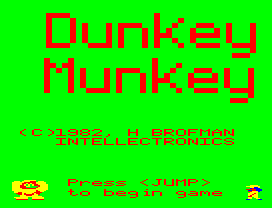
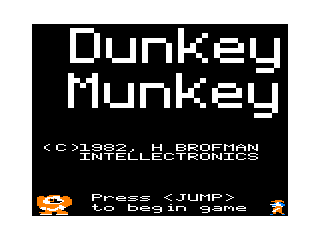
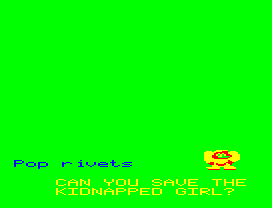
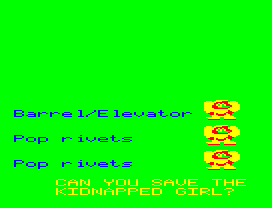

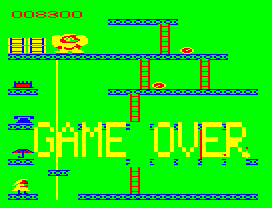
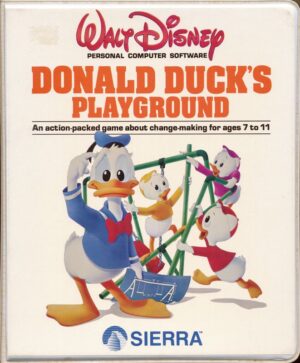

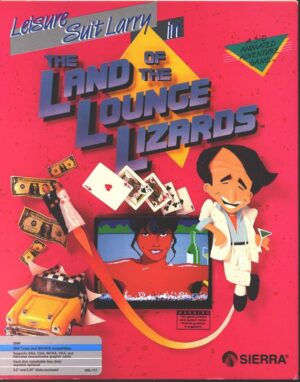
Reviews
There are no reviews yet.